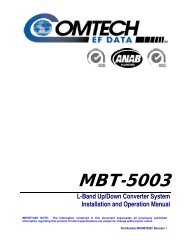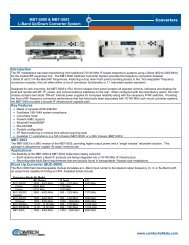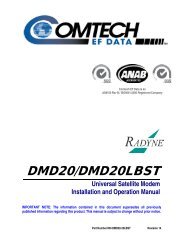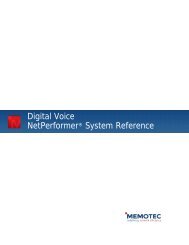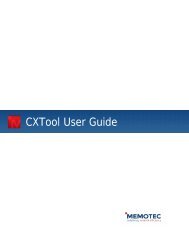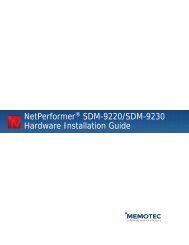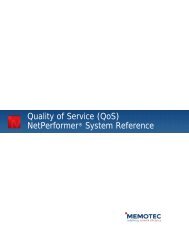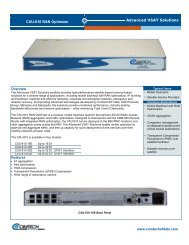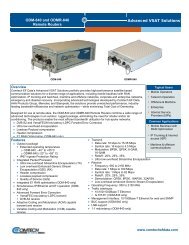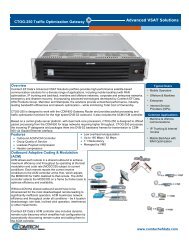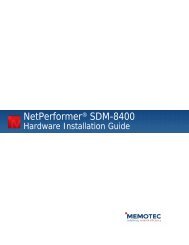ATM Option System Reference - Comtech EF Data
ATM Option System Reference - Comtech EF Data
ATM Option System Reference - Comtech EF Data
You also want an ePaper? Increase the reach of your titles
YUMPU automatically turns print PDFs into web optimized ePapers that Google loves.
1.2.7 <strong>ATM</strong> Addressing<br />
Product Overview<br />
<strong>ATM</strong> addresses are used to uniquely identify an end system. These addresses identify the<br />
source and destination nodes when establishing SVCs. An end system can have multiple<br />
addresses or accept multiple calls on the same address.<br />
Types of Addresses<br />
The <strong>ATM</strong> Forum defines two different types of addressing:<br />
• Public networks use E.164 addresses. These addresses can be up to 15 digits<br />
long (8 bytes), and look much like telephone numbers. While E.164 addresses<br />
have a familiar format, they are not practical for private networks. Each address<br />
must be assigned by the carrier, which can get both cumbersome and expensive.<br />
• Private <strong>ATM</strong> networks use an addressing structure called <strong>ATM</strong> End <strong>System</strong><br />
Address (AESA) that uses a 40-digit address (20 bytes). Several types of AESA<br />
addresses are available:<br />
- DCC format: Includes a <strong>Data</strong> Country Code (DCC) in the prefix. The DCC<br />
specifies the country in which the address is registered, and is nationally<br />
assigned.<br />
- ICD format: Includes an International Country Designator (ICD) in the prefix.<br />
The ICD identifies an international organization, assigned by the British<br />
Standards Institute.<br />
NOTE: The only difference between DCC and ICD formats is the scope of the organization<br />
that delivers the country code.<br />
- Imbedded E.164 format: Includes an E.164 address in the AESA prefix.<br />
This format is useful when an end system on a private network has to reach an<br />
end system on a public network.<br />
- Local AFI format: Includes only the Authority and Format Identifier (AFI)<br />
in the prefix. This format can be used for an isolated <strong>ATM</strong> network or when<br />
creating a network for internal purposes only.<br />
Caution: Local AFI addresses must not be used if the <strong>ATM</strong><br />
network connects to a public network, since there is no way to<br />
ensure the global uniqueness of these addresses.<br />
All four AESA address formats contain the following:<br />
• AFI: Authority and Format Identifier. This field indicates the format of the<br />
address (ICD, DCC, E.164 AESA or Local AFI).<br />
• DSP: Domain Specific Part, which is further divided into high order (HO-DSP)<br />
and low order (ESI and SEL) fields.<br />
- HO-DSP: High Order Domain Specific Part. The coding of this field is identified<br />
by the same authority that assigned the AESA address.<br />
Memotec Inc. 1-9



